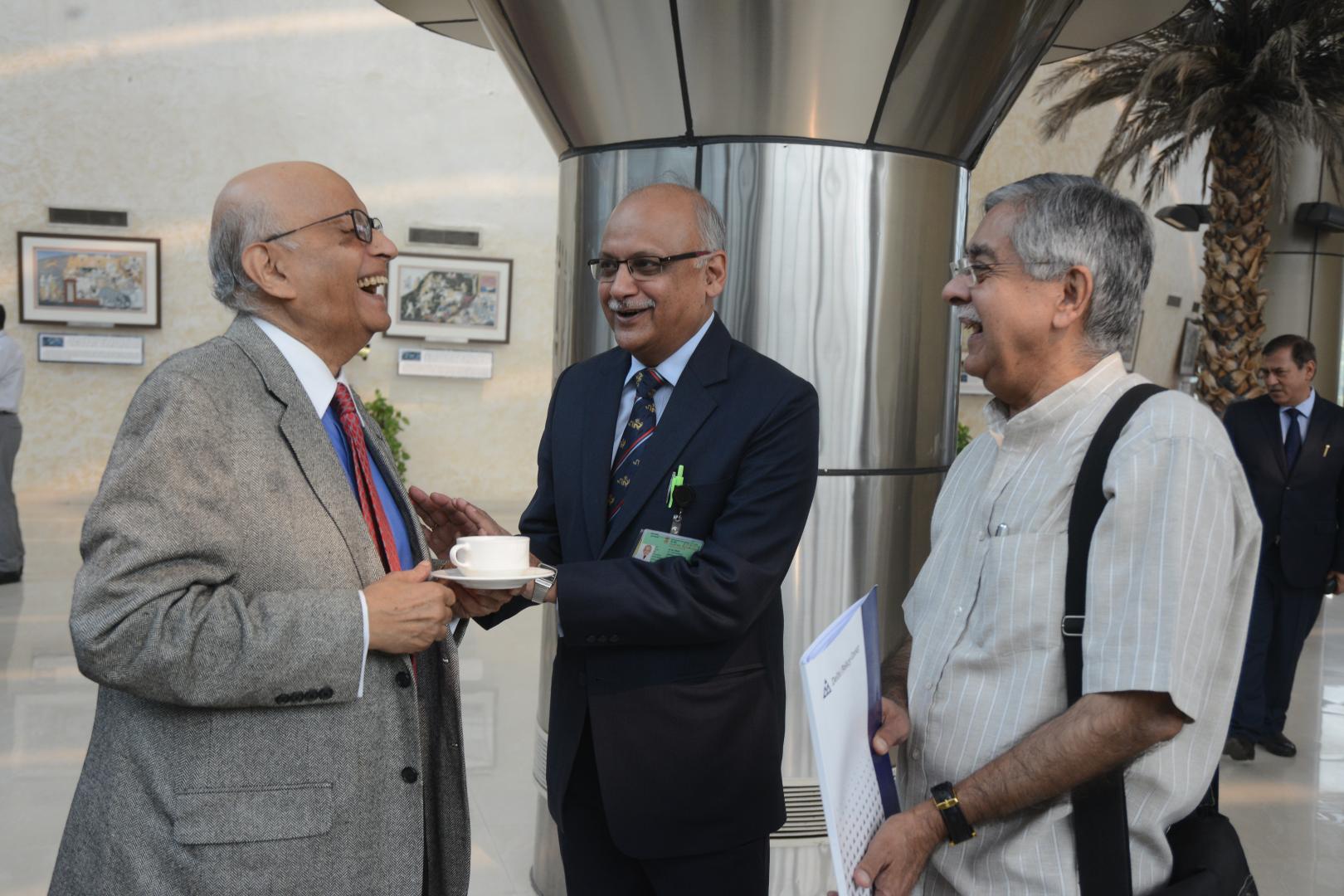In three sessions China’s world view and strategy in the Indo-Pacific, its economy and trade relations as well as military and strategic issues were analyzed and discussed by several notable panelists and guests in order to understand where China is headed in the 21st century. With India and China being neighbors and their relationship not always being easy, it is crucial for India to fully grasp China’s motives and actions in order to shape the future cooperation between both countries, the existence and continuation of which is critical for maintaining stability in the region. The seminar was jointly organized by a consortium of leading Indian Think Tanks which includes CENJOWS, CLAWS, CAPS, KIF, NMF, the Forum for Strategic Initiatives and the India office of the Konrad-Adenauer-Stiftung.
The first session of the seminar revolved around China’s world view and ideology as well as its ambitions in the Indo-Pacific. China’s world view is driven by the Communist Party and this is unlikely to change as long as one-party rule exists in the country. The future goals of the country pivot on the so-called Chinese Dream, a narrative on the basis of which China shapes its future development, and are also written down in the White Papers that China publishes as a response to reports by the United States on Chinese Military Power, where China is portrayed as a threat. It was stated by the speakers that the White Papers naturally included only information that the country wanted the world to know. Aspects of the Chinese Dream include the goal of doubling the countries’ 2010 GDP by 2020 and China becoming a fully developed country by 2049. China’s world view is also reflected by its position regarding the Indo-Pacific. The concept of the Indo-Pacific allows certain countries in the region to come together and cooperate. One facet of this cooperation can be seen in the establishment of the Quadrilateral Security Dialogue, a forum between the USA, Australia, India and Japan. In this, China sees an attempt by the United States to establish a way to counterbalance China, as China has been denied access to this forum.
The second part of the seminar focused on China’s economy and trade relations with Asia and the world were discussed. As the Belt-and-Road-Initiative (BRI) constitutes an integral part of the country’s economic strategy this session centered around the initiative’s scope and implications. Even though being an infrastructure project at heart, the security aspect of the initiative could, according to the panelists, not be denied as it was a means to protect Chinese overseas interests. Apart from energy and infrastructure projects, the BRI does also include an increasing emphasis on digital aspects and cyber space (Digital Silk Road) as well as foreign direct investment and loans to less developed countries. China’s loans and investments led the country to become the world’s largest government creditor with countries all around the world owing five trillion US dollars of debt to China, which allows the country to exert a high degree of influence, especially on those countries that are the most indebted. The initiative has been criticized by many. India has so far refused to become a part of it, as China’s motives especially regarding the China-Pakistan-Economic-Corridor are viewed with suspicion. It was further explained that China, in the scope of the BRI, did also expand its activities in Central Asia, a region which was also of strategic importance for India.
The third session of the seminar covered strategic and military issues. One aspect of the Chinese Dream does also include the transformation and reorganization of the People’s Liberation Army (PLA). This includes, among others, the streamlining of PLA ground forces and the increase of marine corps. For China, reorganizing its Navy is even more important against the background of the BRI and the country’s overseas interests. However, China does not only focus on the strategic importance of the maritime, but it is also expanding its Air Force and its space program. With India and China both being military and nuclear powers as well as direct neighbors and major powers on the Asian continent, it was, according to the panelists, crucial for India to understand China’s military ambitions and strategies.
As a conclusion of the seminar, it was stated, that it was crucial for India and China to understand each other if both countries wanted to continue their cooperation in the future. The panelists argued that in order to protect itself against China, India should continue a strategic partnership revolving around trade, investments and security with its neighbor. It was expressed, that even though it might not be in friendship, China and India would most likely find a way to cooperate and coexist peacefully in the future.
The discussions were held under the Chatham House Rule.







